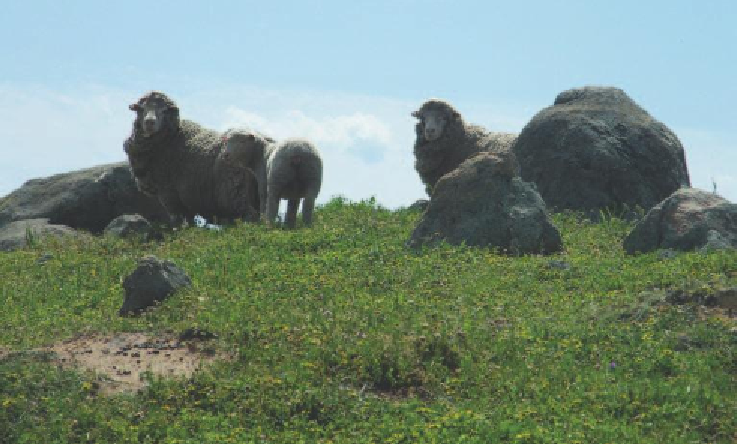Biology Reference
In-Depth Information
Figure 5.13:
Sheep camping on a rocky outcrop. (Photo by Damian Michael)
selective consumption of desirable plant species; and (2) time-controlled grazing,
involving grazing during specific stages of a plant's development, such as during
flowering. Both strategies require long-term planning and careful monitoring. If
appropriate grazing regimes are applied, then a balance between production and
conservation may be achieved. Indeed, grazing could be a useful tool in controlling
dense regrowth vegetation and broad-leaved exotic plants.
Woody weeds and other invasive exotic plants
Approximately 45% of the plants associated with granite outcrops on the South
West Slopes of New South Wales are introduced species.
5
This can have negative
effects on rock-dwelling animals (Figure 5.11). Rock outcrops such as scattered tors
are often dominated by introduced agricultural grasses like Barley Grass, Rye
Grass and Wild Oats, whereas bornhardts support relatively few agricultural
species. Instead, bornhardts often contain a higher proportion of plants
unpalatable to livestock like Inkweed, Blackberry Nightshade, Sweet Briar and
Prickly Pear.
Granite outcrops that are close to towns often contain a high proportion of
plants that escape from nearby gardens or are spread by the introduced European
Blackbird. Some examples of woody weeds that commonly invade these kinds of
rocky outcrops include Privet, Cotoneaster, Boxthorn, Firethorn and Cherry Plum.
In most cases, woody weeds can be cut and poisoned using a glyphosate-based
herbicide. Local councils also should be encouraged to develop strategies to

